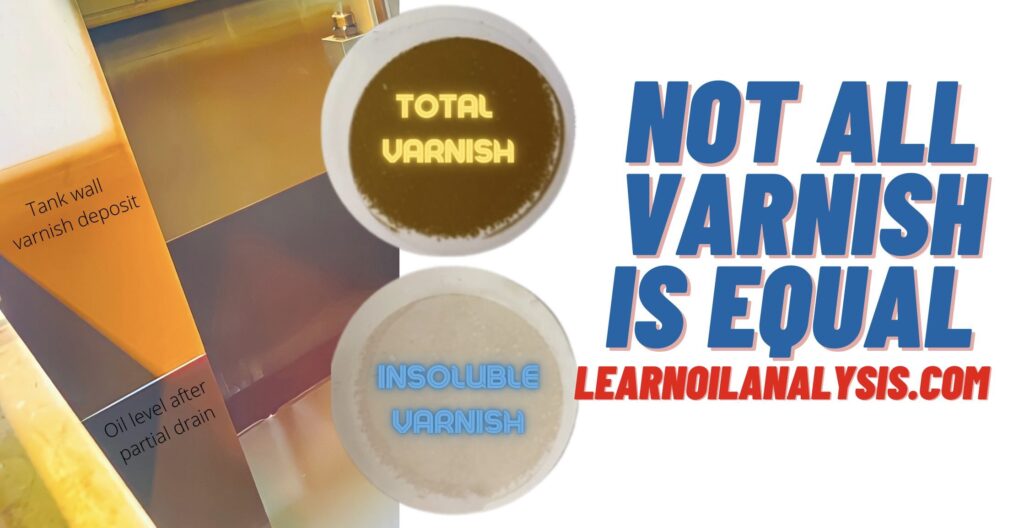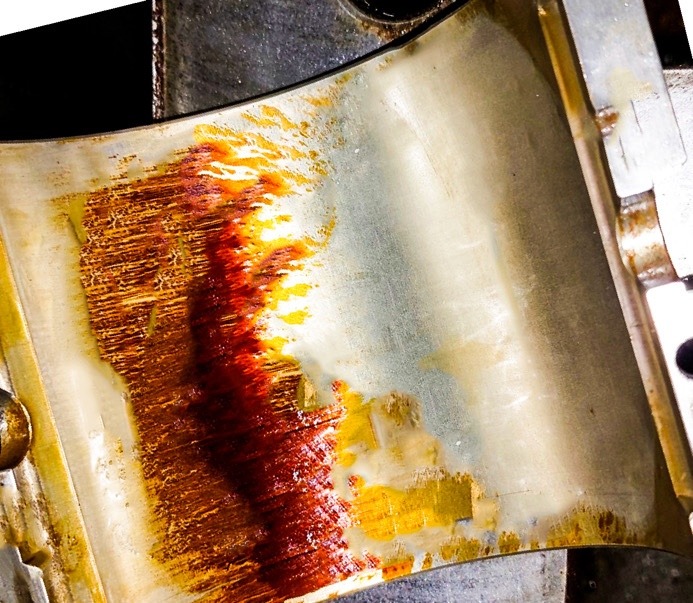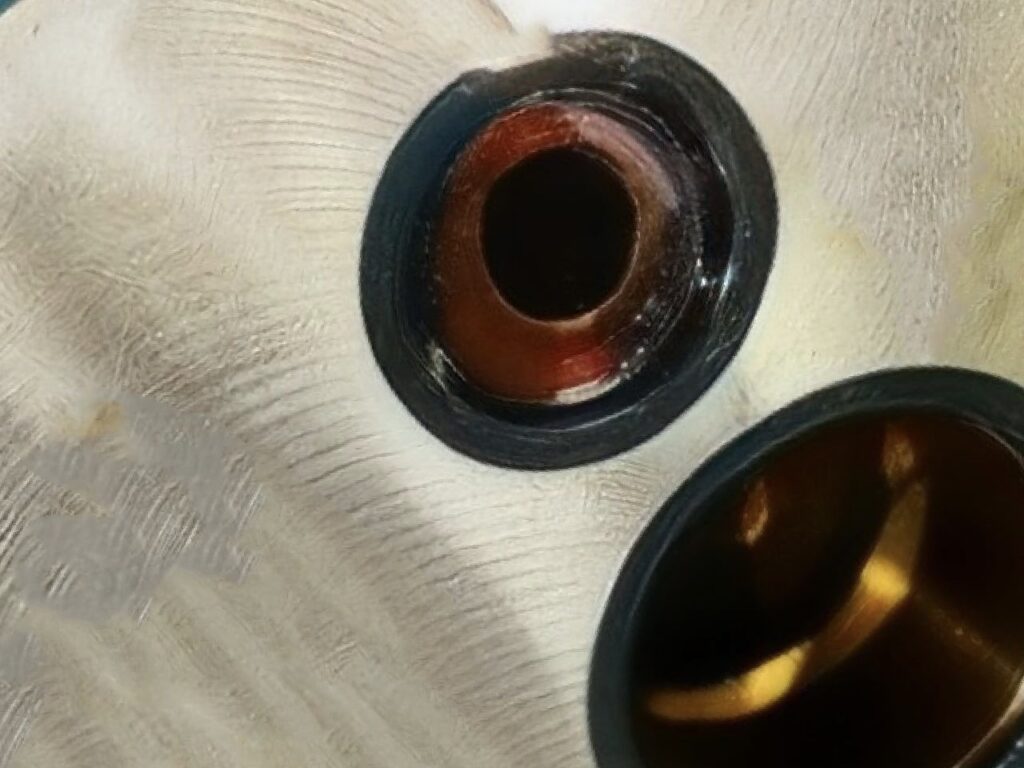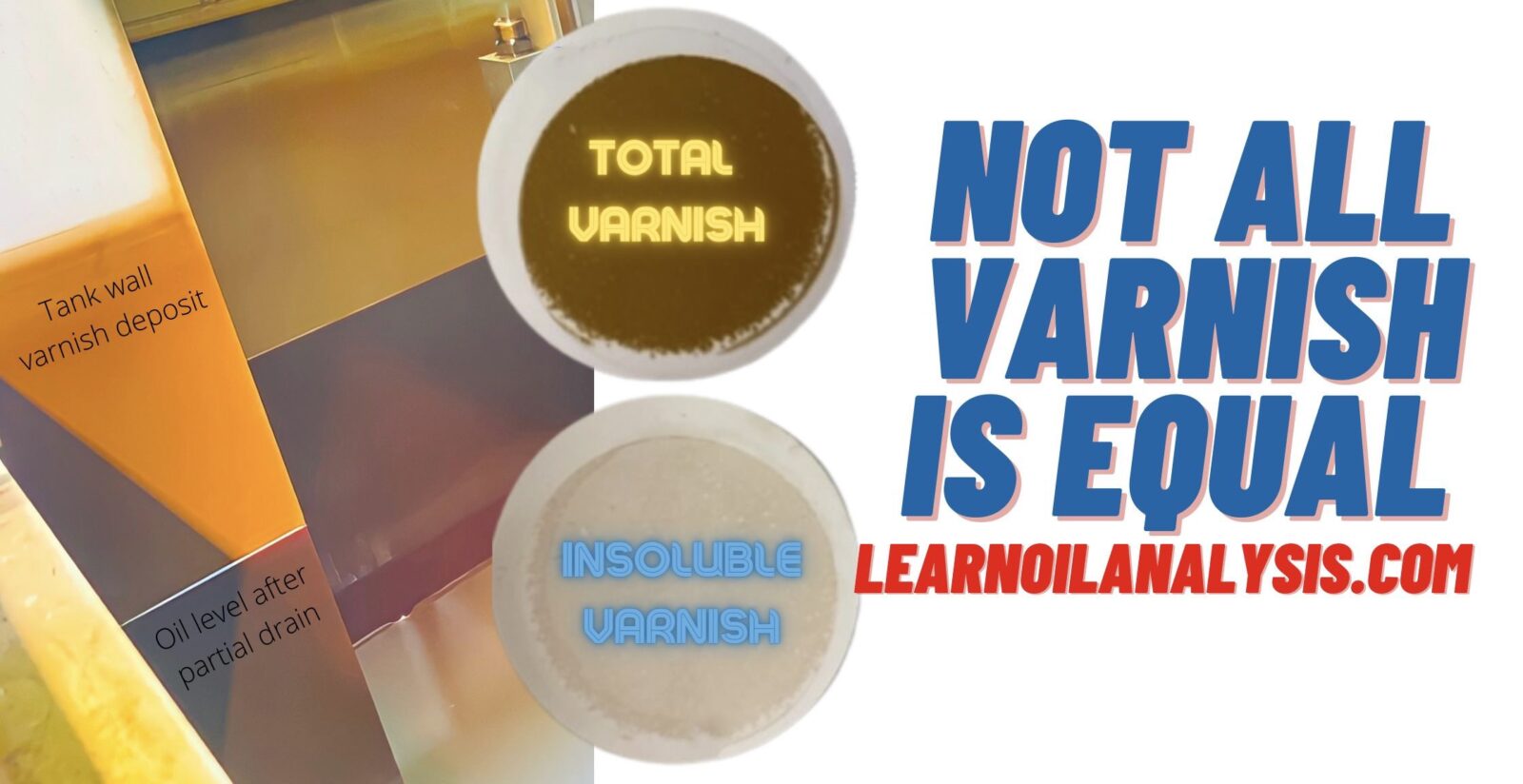
Most of those who are savvy amongst yourselves will have heard of varnish in hydraulic and turbine systems. You may have even heard of varnish potential ratings and tests like MPC (membrane patch colourimetry) to test for them.
In earlier articles I have likened Varnish to cholesterol. This makes sense as varnish clogs up your machinery just like cholesterol does your arteries. Those who are quite health aware or watched any advert for a health food may also have heard of good cholesterol and bad cholesterol. In varnish there is something similar, although there is no good varnish, there is a bad and worse form which I will discuss in this article.


What are two main types of varnish?
In simple easily solubilised and poorly solubilised often abbreviated to soluble and insoluble varnish. This refers to how well the oil (a hydrocarbon solvent) dissolves the varnish and keeps it suspended so it can’t deposit and cause what we know of as varnish deposits.
When I first came across this phenomenon my natural reaction was to think the stuff that deposits readily (I.e. the insoluble varnish) is the bigger problem because it drops out of solution as soon as there is a slight drop in temperature. This has the problem of depositing in cooler areas and causing overheating and more varnish creation and hence a vicious cycle forms. In this case most the problems here tend to be regarding insulation of the system and poor cooling. This is bad but there is a worse problem too.
Temperature effects on solubility (why cold spots are more prone to varnish formation)
Generally the hotter something is the better it will dissolve and solubilise things. This is because the energy from heat speeds up the particles of varnish in the oil making more collisions likely and hence more likely to break apart the varnish agglomerations to allow them to be solubilised. You can try this experiment at home with a glass of hot water, sugar until it can’t take anymore and starts to precipitate at the bottom. If you put this in the fridge overnight you will notice the amount of sugar not dissolved has increased dramatically. The same is true of varnish in that it forms where temperatures are hot and deposits predominantly where it is cold, often insulating the cooling parts of a system, leading to over heating and more varnish formation.
So why is insoluble varnish not that bad?
Insoluble varnish predominantly deposits on cold surfaces such as is seen on the external most surfaces of the machinery. So cooling pipe work and tank walls tend to be the main areas this occurs. This leads to insulation and more varnish formation, but typically this material has deposited before it gets to the most internal critical components of the machinery, which are likely to be operating at higher operating temperatures.
So the main problem with insoluble varnish is insulation and overheating, but the likelihood of this material making it’s way deep into the system is unlikely as it will have likely deposited way before then.
So what about more soluble varnish?
Soluble varnishes will for the most the early life of the machinery not be noticed as the oil handles these very fine varnish deposits and keeps them suspended. The problem is that when you dissolve something well and you have a circulating system you are ultimately spreading the dissolved varnish particles throughout the entire system. This means if there is an imbalance such as the oil becomes over saturated with varnish, or there is water contamination to hinder the oils solubility properties, or the temperature suddenly cools such as in a shutdown the varnish can deposit. The resulting sludge can easily block or seize control valves and narrow tolerance clearances interfere with the normal operation and even cause sudden stoppages. This imbalance can also be caused by oil changes or partial changes too.
Bitter sweetening of the oil
You may have heard of the term sweetening of an oil which is a term for partial oil changes. I am personally not a fan of these, but realise often many large fluid systems operators the financial budgets will often override what is practically best for the machinery at times. Hence if you are doing this type of practice you should support it with very regular oil analysis to catch potential problems as a result. A case study of this is below:
Partial changing increased a varnish problem
A power station client of ours performed a planned 25% sweetening of a turbine oil owing to low life remaining in the oil. Ideally the customer realised a full change would be best as oxidised oil from the other 75% rapidly depleted the new 25%, but owing to financial constraints and difficulties obtaining the lubricant required in such large quantities opted for a 25% sweetening. The partial change shutdown was very successful and occurred ahead of schedule. The customer as they normally would took a sample before and after the sweetening to reassess the condition. The varnish potential MPC rating dropped from 19 to 8 which was seen as a large improvement. However 3 weeks later the customer started experiencing problems with sticking components. They repeated the sample and the MPC rating had increased to 32, so worse than before the change. This seemed strange and the customer blamed the oil supplier at first until we explained what was occurring in the system. Essentially the new oil had very good solvent properties and had started dissolving all the varnish on the tank walls. The disturbance of the 25% drain had loosened and disturbed the varnish stability on the tank walls too. Overall, this meant over the the course of 3 weeks the varnish that had been dissolved was quickly over-saturating the oil and depositing again. We put the the customer in contact with 2 filter companies to help them with a varnish removal unit to combat this problem. Within 6 weeks the varnish potential was down at <5.
If you read the case study below you may be forgiven for asking why the MPC after the oil change didn’t remain high if the varnish was being solubilised. Indeed most the reason is likely because the full effects of the oil change hadn’t taken place when the sample was taken 8 hours after the partial oil change. However, one important factor is the MPC test itself in how it measures varnish.
The limitations of MPC
MPC is an evolving method and so tweaks are being made every couple years, so I would always recommend looking at the latest method version for the exact current methodology. However the principle of the test involves mixing the sample with a solvent such as petroleum ether, filtering and measuring the darkness of the patch at the end.
The limitation is solvent selection. I personally use PET ether as per the method recommendation, but I have known major oil companies try to put pressure onto labs and potentially method standards organisations to use other solvents such as toluene for the method on their specific oils. In fact I have in an old job had to tell the technical manager of major oil company I couldn’t in good consciousness make this amendment for them, but other labs may not be as fortunate as me to be able to turn away a large company like this. Why is this important? Well toluene is an excellent solvent and very readily dissolves varnish particles. So if you use toluene you will get a good result as you dissolve the varnish. I did a little in house testing on the sample the customer wanted the method adjusting and for a PET ether sample giving 27 I got 11 with toluene. This clearly makes a large difference in diagnosis. In general I don’t disagree with method modifications if transparent that’s what you are doing, however, I think you shouldn’t pick and choose based on a specific client, which has been a bit of an industry practice in recent years. That said there are a few acceptable modifications for specific product types for example if the oil is not soluble in PET ether to begin with in which case you would need a different solvent and potentially patch type for these sample types.
Clearly toluene is going to readily dissolve varnish, but even PET ether will dissolve some of the more soluble varnish particles meaning MPC is essentially measuring mostly the insoluble varnish particles. This means most the soluble varnish discussed in the article is not detected.
How to measure the soluble varnish too?
With a quick search currently over 100 proposed alternative methods to MPC as it stands now. Some are small modifications but others use completely different methodologies to detect soluble and insoluble varnish. A few involve changing the solvent type, others use no solvent at all. A few even worked on reading the difference in colour between one side of the patch and the other. The most widely known alternative involves centrifugation and actually pre-dates MPC. These alternatives do give improvements over MPC. Ultimately the problem comes from measuring soluble particles by filtration or centrifugation doesn’t work as truly soluble varnish particles can’t be filtered out and when you get to the very finest filtration you are measuring additives too.
Hence in all methods you will never detect all the varnish in a sample, but there is a lot of variation on what’s on offer on how well the testing will detect varnish potential. That is why at Oil Analysis Laboratories we invented our own proprietary techniques not based on filtration or centrifugation to detect varnish. We can perform these in addition to MPC you already know about to give the most complete picture of risk factors for varnish potential.
If you would like to find out more about MPC, varnish testing in general or our OAL method for varnish measurement please get in touch using the contact us button below.


